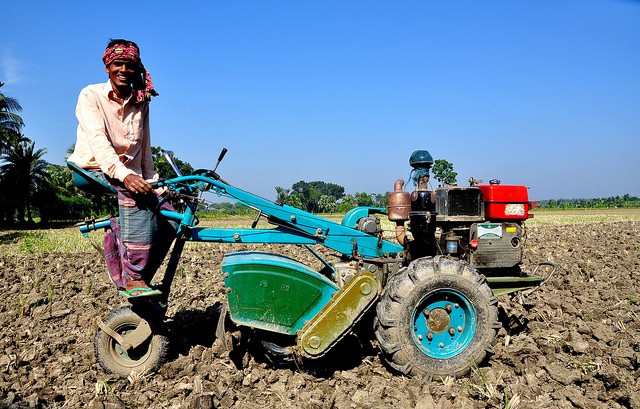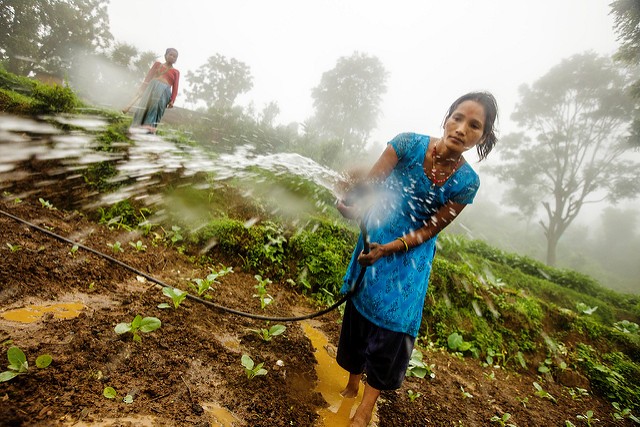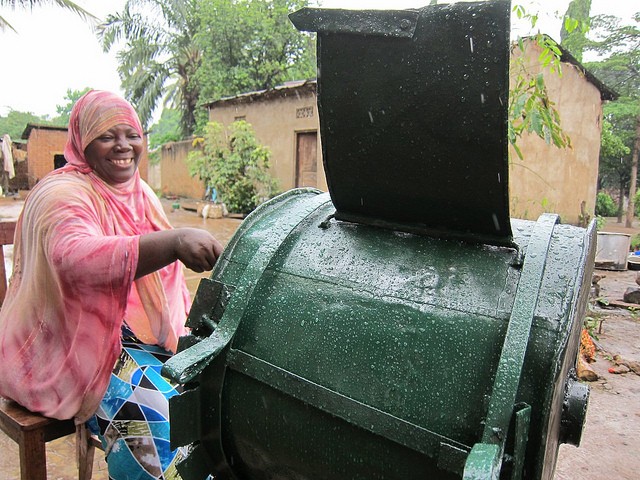Thank you everybody, thanks to everybody for being here. And I want to thank in particular Dr. Shelby here, who if it wasn’t for his lack of enthusiasm, he’d probably be a perfect guy to be in the lead here.
I also want to thank all of our colleagues and partners from Germany, the Netherlands, South Africa, and Sweden. My friend and colleague the Swedish Ambassador to the United States is here with us today, and I want to thank you for being here.
This is a really exciting thing to see. I was just out in the marketplace. It’s a really good thing that you all are doing the innovating and not me because a lot of this went over my head, but we did just order a tractor, we’re going to plant funny little seeds, we’re going to take care of all of this stuff.

I had the pleasure and good fortune to be there at the birth of Feed the Future early in President Obama’s first term, and it was born out of a vision that the agriculture sector should be one that enables people to thrive, and survive, and grow, and create, and build their communities and countries. And not the source of pain and hardship and hunger and inequality. And what you all are doing and what I just saw out there, for which I thank all of you and I want to thank the USAID team across a number of bureaus, is making that dream come alive. So it’s a wonderful thing to see, the amount of energy and creativity and dynamism.
And it’s – what I saw out there is totally cool. But it’s also totally necessary. If we’re going to transform agriculture in the way that we aspire to do, but also if we want to give people a chance at a time of real difficulty.
I was in Istanbul last week at the World Humanitarian Summit, along with leaders from governments, the UN, and NGOs around the world.
We were there to lay down some markers for setting a new global agenda to tackle a future of crises that are more complex, longer-lasting, and, often, more devastating. You know what I’m talking about – Syria, South Sudan, the ravages of El Niño across eastern and southern Africa – And the list, unfortunately, is growing and very few crises are coming off.
Now they’ve all got different drivers and causes, and involve many different actors – but it’s a safe bet that food and water shortages, and the accompanying devastation and despair, have played some kind of role in each and every one of them. And it’s a safe bet that a lack of opportunity has fueled each of these crises in some way.
So when we invest in the innovators and entrepreneurs like the ones I’ve been able to meet today, we’re not just investing in a cool new technology or a promising business, though we are doing that. We’re helping countries become a little bit stronger, and a little less vulnerable to crises and conflict. We’re helping people build the core set of capacities they need to withstand the next disaster. We’re helping build safer, and more prosperous communities. You are actually changing the world.
These are the kind of investments that, if we put them in the bank today, they will yield returns for decades. And we’ll need those returns if we’re going to end hunger and extreme poverty, or achieve any of the Sustainable Development Goals.
Of course, as you all know, it’s not that easy. It takes time to go from that initial good idea to an intervention that can have a sustainable impact on food security. It takes additional resources, strategic patience, and plenty of trial and error. And often, as we just discussed in a meeting upstairs, it takes outright failure.
So it may not be easy, but I think we’re moving in the right direction. And the successes of our Grand Challenges offer proof of that.

Solutions supported through the Securing Water for Food Grand Challenge have produced more than 3,000 tons of food and reached more than 370,000 people.
The Powering Agriculture Energy Grand Challenge has catalyzed more than $53 million to expand clean energy innovations for farmers and agribusinesses, reducing carbon pollution along the way.
These are what the military calls “force multipliers", and they are powerful.
And I am happy to announce that today we will build on that progress with two new calls for innovations.
First, the Feed the Future Partnering for Innovation Program will invest up to $5.75 million to help selected entrepreneurs scale proven technologies for food safety in Latin America and the Caribbean, and to create new partnerships in Zambia to boost growth and improve nutrition.
Also, USAID is proud to join with Sweden, South Africa, and the Netherlands to announce the fourth call for innovations under the Securing Water for Food Grand Challenge. This $7 million call will focus on cutting-edge technologies and new business models, as well as innovations that prioritize the engagement of women, who make up 70 percent of smallholder farmers globally.
As we continue to seek out new ideas and opportunities, we also need to keep the momentum going. And I think we can do that by focusing on 3 things:
The first is about reaching more people. We need to maintain our focus on bringing proven innovations and technologies to scale.
Now I’m encouraged to hear in just the booths I was able to stop at outside, in each one of them people were talking about demand already beginning to outstrip supply. That’s a very good thing, but how do we really fuel that machine?
Because it’s when we bring this stuff to scale that we have transformative power. None of that is to minimize the impact on a village, a community, or even a country, but what we’re shooting for here is transformation. With scale, we can get there.
The second is connecting people to people, and getting technologies and innovations to the people who need them most.
And again I’m pleased in just the discussions I had on the way in people were overwhelmingly focused on small producers, the poorest farmers, women in agriculture, the people who often don’t have access to the tools that they need.
I saw the CoolBot, which interestingly was developed by somebody facing challenges here - someone named Ron Khosla – and is now being deployed to Honduras.
That’s the same thing we’re going to see at the Global Entrepreneurship Summit that President Obama will host in Silicon Valley later this month. A lot of the solutions we need are cross-cutting. They are useful to people everywhere. Again, it’s this notion of scale and force multipliers to change not only communities and countries but the entire planet.

The third challenge is integrating all of this into the work that we do, and let me just say a little bit about how we’re trying to do that at USAID. I want to give a shout-out to the men and women of the Agency who have taken this concept of innovation along with a greater emphasis on science and technology, and figured out how we use it as a force multiplier in something like Feed the Future, or in Power Africa.
How do we bring it into the Agency so that it is a tool, a capability, a resource that our missions can draw on around the world? One of my charges as Administrator – you may have heard there’s an election in November, so there’s going to be a new Administration in January – is to make sure that we are institutionalizing this capability at the Agency, so that it is – again – something that we can all draw on. Again, we can draw on assistance, we can draw on policy analysis, we can draw on innovation as a tool across the Agency.
I think we’re making very good progress. I’m confident that we will hand over an Agency that now has this as part of its DNA. And the things like Grand Challenges, as exciting as they are, will no longer be a “what?” – but will be something USAID does into the future.
But I think that’s our third challenge and it’s one that I’m very committed to.
I’m going to close and turn over to others on this, but I really, as I said, want to thank all of you. Eight years ago, when we came into this Administration agriculture was a field that the international development community and others had basically abandoned. It had once been in vogue, but we had gone through multiple other development trends.
And when we looked at funding in agriculture, investments in agricultural development were outstripped by investments in relief and food aid, which is clearly upside down. Investments in research and development had fallen, and while there were some of you out there doing the kind of creative and innovative work you are doing today, that was not married up, I think, with some of us, and we certainly were not taking advantage of it.
We’ve been able to do that, because of what you all do and have done. You make this notion of innovation come alive in practical solutions for real people’s lives. And you’re changing the world. You’re changing the game, and you’re changing the world.
So for that, I wish you the best of luck in the Summit. Go visit all of those booths because it’s awesome. We’re going to run outside and make sure the security deals with the tractor that the Swedish Ambassador just ordered. And let me again say thank you and congratulations to all of you. Have a great Summit.







Comment
Make a general inquiry or suggest an improvement.